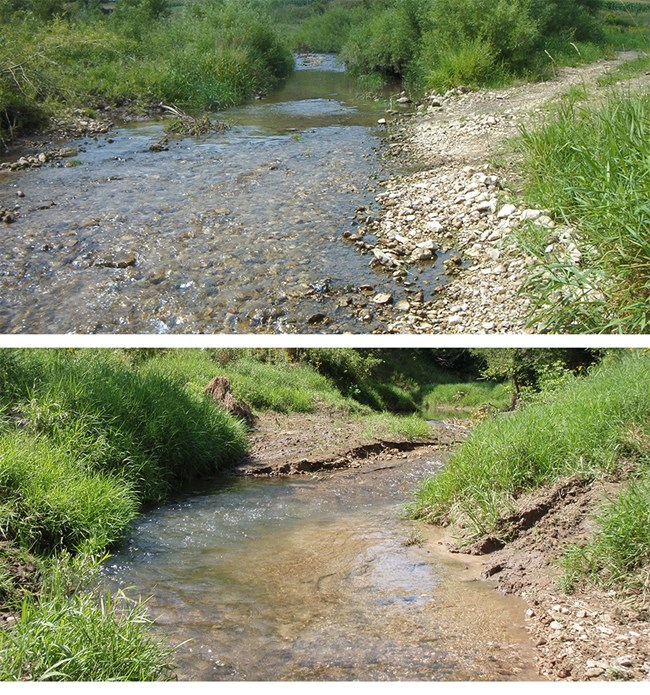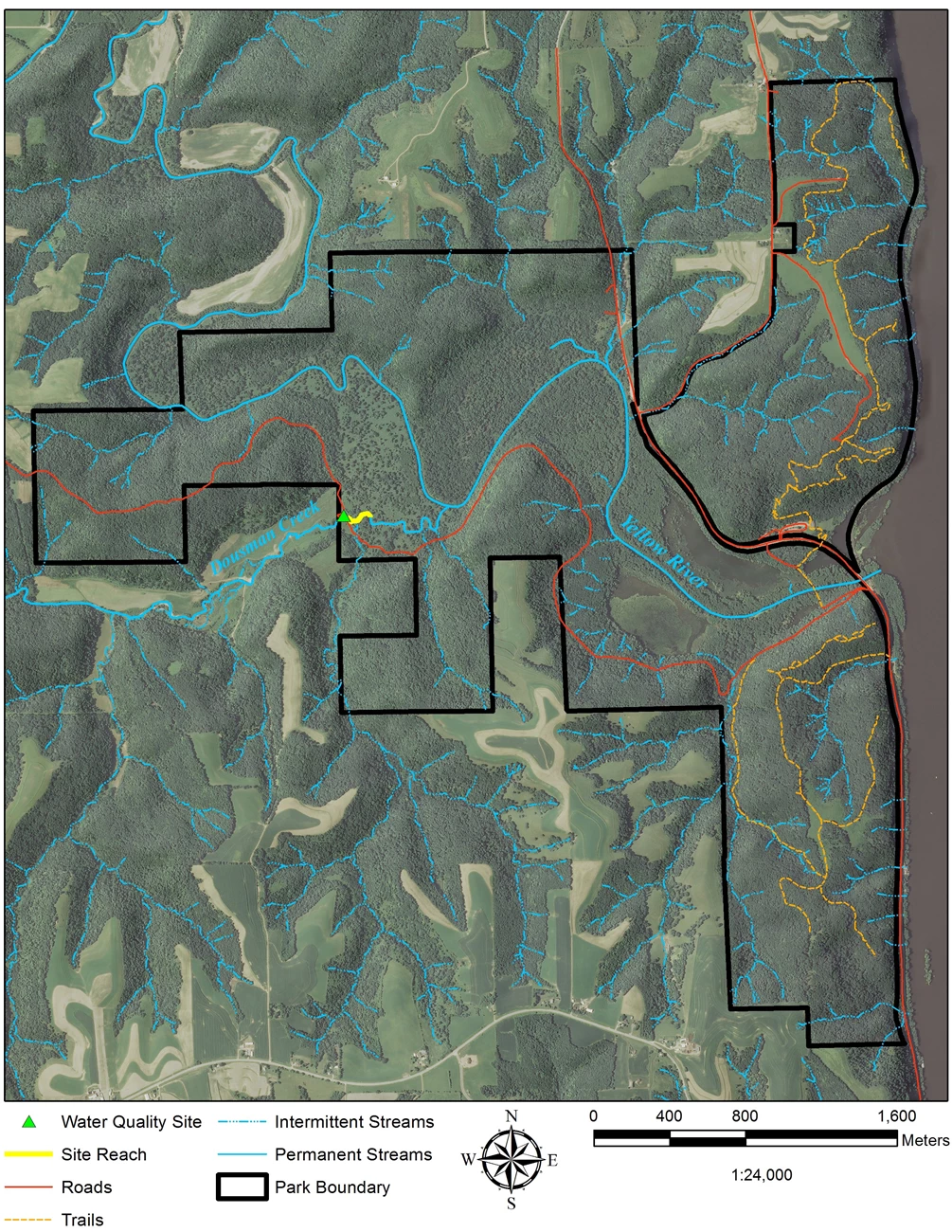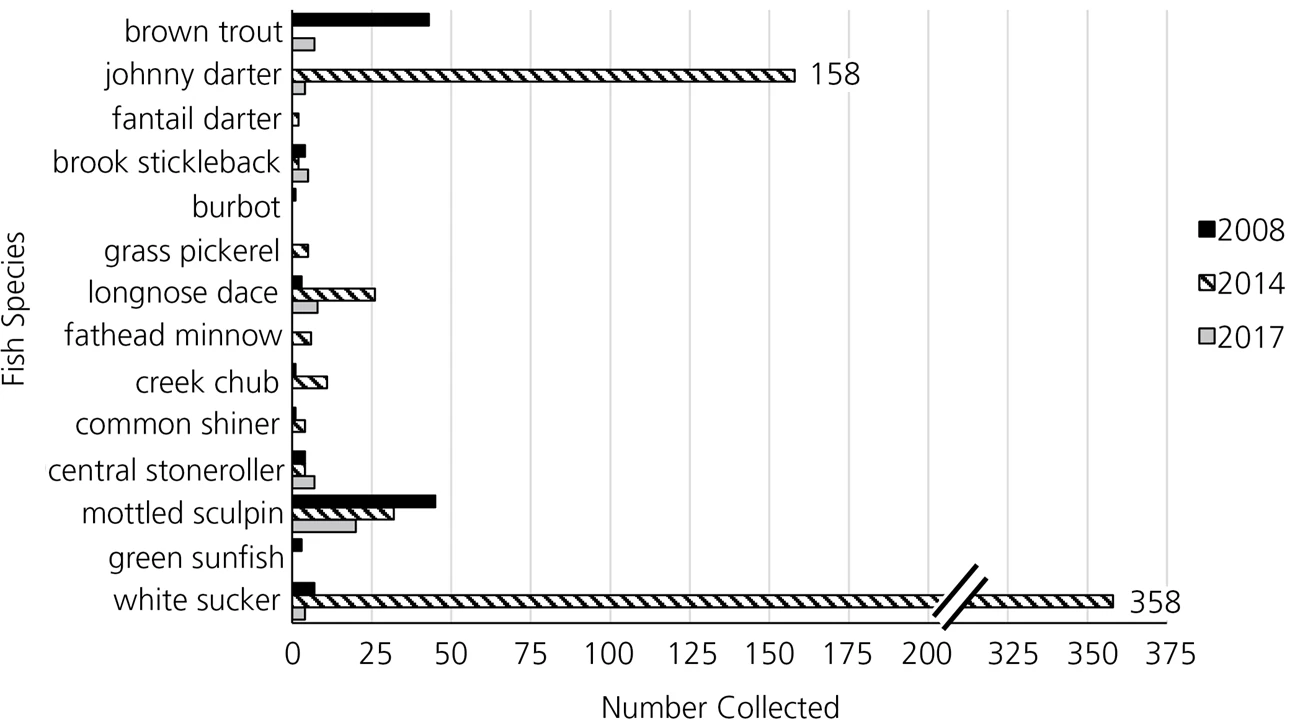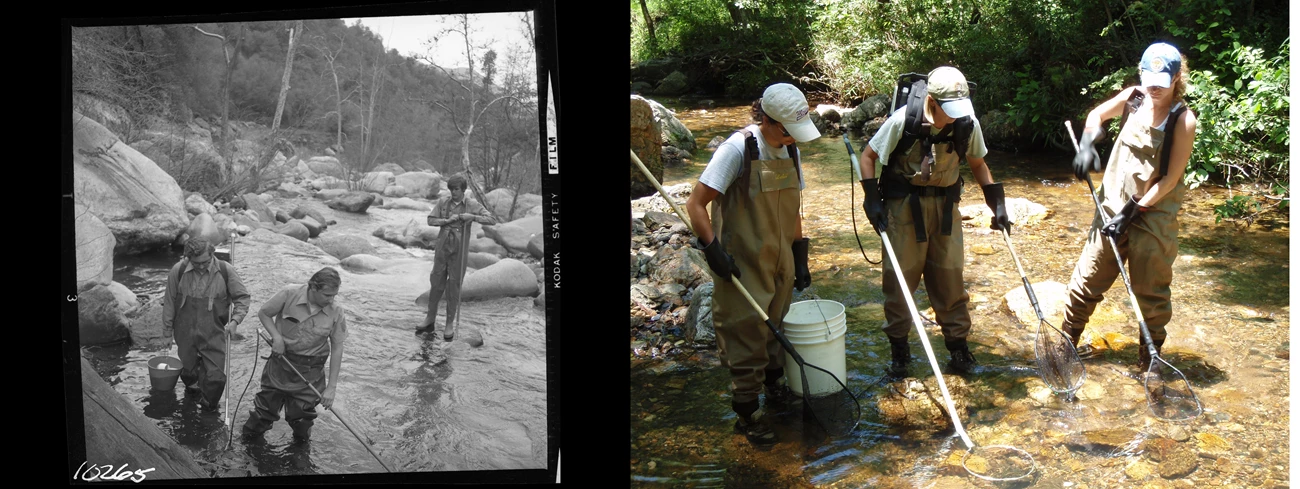Last updated: September 12, 2023
Article
Aquatic Community Monitoring at Effigy Mounds National Monument

NPS
Aquatic Communities
Effigy Mounds National Monument (NM) was established in 1949 to protect more than 200 sacred mounds and effigies—piles of earth in the shapes of animals and water spirits that were built by American Indians. Located at the confluence of the Yellow River and Mississippi River, the park also boasts a variety of natural communities, including forests, goat prairies, rivers, and streams, that support a wide array of plants and animals. The Heartland Inventory and Monitoring (I&M) Network monitors aquatic species in Dousman Creek at Effigy Mounds NM to assess the status of the aquatic invertebrate (insect larvae, worms, crayfish, snails, and other animals without backbones) and fish communities and to detect long-term trends. Knowing the condition of these animals over time can reveal changes in stream integrity and health.
Dousman Creek, a tributary of the Yellow River, is a perennial, cold-water stream that is recognized as a high-quality native trout stream. Cool-water and cold-water species are at risk in the Midwest due to rising water temperatures and widespread habitat degradation caused by land use and climate change. By helping Effigy Mounds NM maintain and protect Dousman Creek, we can offer refuge to these species that are facing environmental stresses elsewhere.

NPS
Stream Monitoring
Information about aquatic communities is critical to understanding stream health from a cumulative perspective. Fish and invertebrates have relatively long lifespans and are sensitive to water quality and habitat alterations. However, not all fish or invertebrates are equally sensitive to these changes. Some are described as “tolerant” while others are “intolerant.” Tolerant taxa can survive in habitats with a larger range of conditions (such as temperature, turbidity, or silt concentration), while intolerant taxa will experience population decline or migrate elsewhere in altered conditions. Whereas water quality measurements are a snapshot in time, the aquatic species we find in a stream can tell us about persistent changes in stream condition.
Scientists in the Heartland I&M Network have been monitoring Dousman Creek in Effigy Mounds NM since 2008. We monitor water quality, physical habitat, and the aquatic community. Water quality measurements include water temperature, dissolved oxygen, pH, conductivity, and turbidity. Physical habitat is assessed to summarize the width, depth, and velocity of the stream and to describe stream channel features like the size and type of materials on the stream bottom. We take notes on the type of aquatic invertebrate and fish species, the number of individuals, and the ratios of certain species. We sampled the same stretch of Dousman Creek in July/August of 2008, 2014, and 2017.

NPS
Dousman Creek, 2008–2017
Our data suggest that Dousman Creek is in fair to good condition, though continued sampling is needed to fully characterize stream health. The fish community was dominated by brown trout (Salmo trutta) and mottled sculpin (Cottus bairdii) in 2008 and 2017. These species are both cold-water fish that are intolerant of poor habitat and water quality conditions. In 2014, we observed an interesting upheaval of the fish community. The creek was highly dominated by white sucker (Catostomus commersonii) and johnny darter (Etheostoma nigrum), which are more tolerant to warm water and changing water conditions. This was likely due to a large flood that occurred outside the park earlier in the summer. This flood scoured the creek bed and deposited fine sediment.
The invertebrate community looked very different in 2017 than it did in the two previous sample years. Most notably, there were over ten times fewer individuals present. Additionally, the dominant invertebrates had shifted from two moderately intolerant taxa (mayfly genus Pseudocloeon and blackfly genus Simulium) to the tolerant mayfly genus Baetis and tolerant Oligochaetes taxon (worms).
Our observations of water quality and physical habitat add depth to our aquatic community observations. While water quality measurements were within the Iowa Department of Natural Resources water quality standards each year, the stream bed experienced major changes during the 2014 flood. Flooding, other human-related activities upstream of the park, and the associated sedimentation could have a negative impact on the native fish and aquatic invertebrate communities of Dousman Creek. We will continue to monitor the aquatic community in the creek to help park managers protect these precious resources.

NPS
Did you know?
Scientists in the National Park Service have been monitoring fish populations using electrofishing for over forty years—see the photo on the left of scientists at Sequoia & Kings Canyon National Park in 1973 using a backpack electrofishing system. Our setup today, while featuring newer technology, looks much the same.
Our scientists work as a team as they walk through Dousman Creek. One person pilots the pulsed direct current backpack while others use dip nets to scoop the stunned fish out of the water. The fish are immediately identified to species, measured, and inspected for diseases or abnormalities. The effects are not permanent; the fish return to their normal state soon after inspection.

NPS
For More Information
View the Full Report.Visit the Heartland Inventory & Monitoring Network website.
